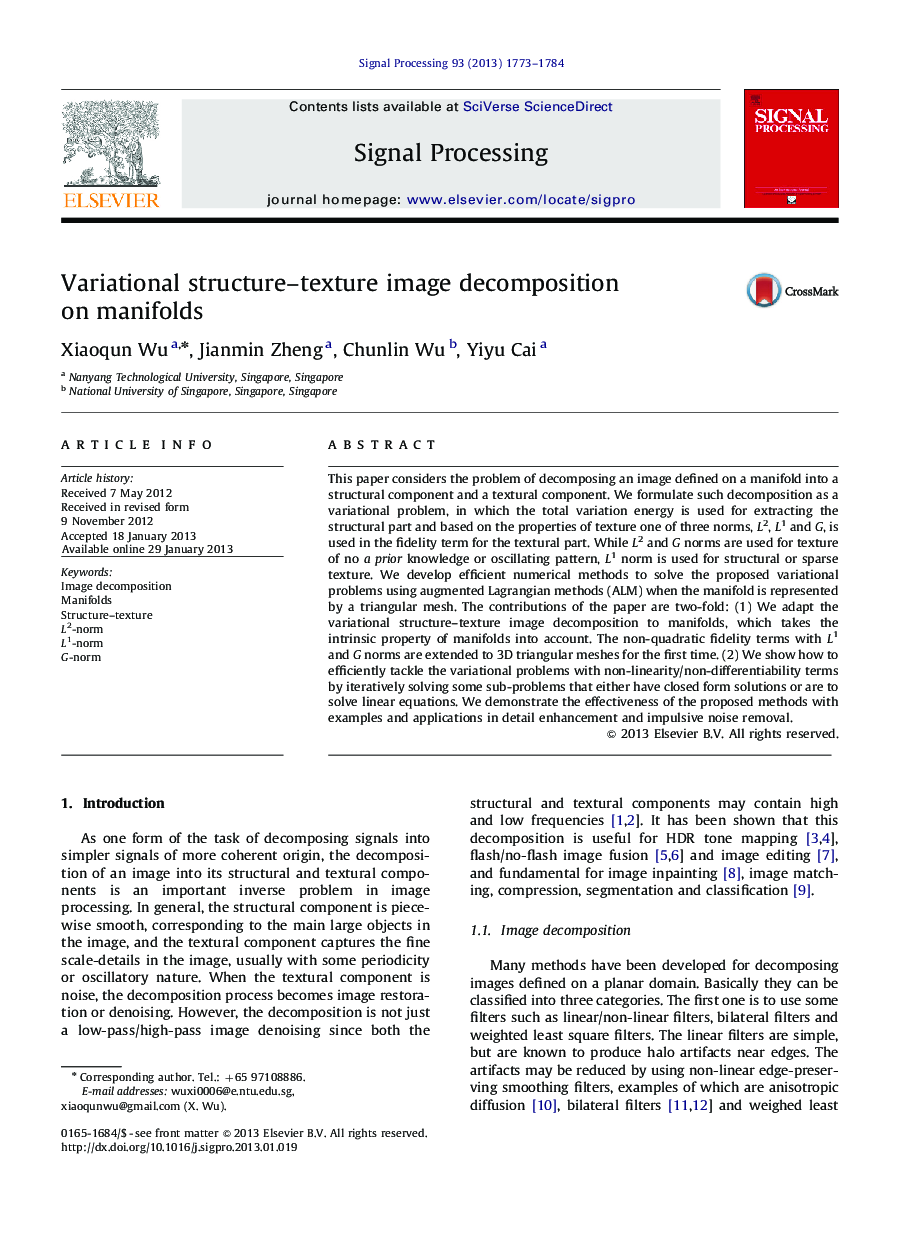| Article ID | Journal | Published Year | Pages | File Type |
|---|---|---|---|---|
| 564000 | Signal Processing | 2013 | 12 Pages |
This paper considers the problem of decomposing an image defined on a manifold into a structural component and a textural component. We formulate such decomposition as a variational problem, in which the total variation energy is used for extracting the structural part and based on the properties of texture one of three norms, L2, L1 and G, is used in the fidelity term for the textural part. While L2 and G norms are used for texture of no a prior knowledge or oscillating pattern, L1 norm is used for structural or sparse texture. We develop efficient numerical methods to solve the proposed variational problems using augmented Lagrangian methods (ALM) when the manifold is represented by a triangular mesh. The contributions of the paper are two-fold: (1) We adapt the variational structure–texture image decomposition to manifolds, which takes the intrinsic property of manifolds into account. The non-quadratic fidelity terms with L1 and G norms are extended to 3D triangular meshes for the first time. (2) We show how to efficiently tackle the variational problems with non-linearity/non-differentiability terms by iteratively solving some sub-problems that either have closed form solutions or are to solve linear equations. We demonstrate the effectiveness of the proposed methods with examples and applications in detail enhancement and impulsive noise removal.
► We adapt the variational structure–texture image decomposition to manifolds. ► L2, L1 and G norms are used for different properties of textural parts. ► L1 and G norms are extended to manifold for the first time. ► We show how to tackle the non-linearity/non-differentiability variational problems. ► We demonstrate the applications in detail enhancement and impulsive noise removal.
